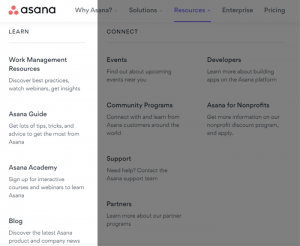I am old enough to remember the time when I was trying to help my team at work figure out our Foursquare strategy.
Old enough to talk about the early days of Pinterest, and my attempts to use it to reach IT professionals.
Even old enough to have been paid, quite handsomely, to help spark and facilitate conversations within a client’s LinkedIn group, before LinkedIn groups were revamped.
Although I’m not technically that old, social media has a way of aging you — or at last creating a fear of career obsolesce if you’re not constantly keeping up with how it’s changing.
This explains why there are now so many social media marketing programs and other opportunities to educate yourself on how to use it.
The problem, as I’ve experienced it, is what happens once you leave the classroom.
Although my formal social media training has been confined to lunch n’ learns from consultants who were brought into various employers and client sites, I’ve found there’s often a disconnect between talking about what social media services can do and how you’ll actually apply your newly-developed social media skills.
This is not the fault of instructors, who usually never know as much about the business needs of a particular person’s employer (if you’re studying social media to stay up to date in your current job or to get promoted) or potential employers (if you’re entering the marketing profession and see social media skills as a requirement).
It really comes down, in many cases, to a lack of institutional knowledge — most companies have been using social media for less than 10 years — and lack of mentorship, because managers hoped the staff they hire or send for training will be able to take care of developing a social media strategy for them.
Based on my work as a content marketing consultant, there are a few ways to ensure you hit the ground running as you learn more about social media and prove the value almost immediately. Consider this your to-do list as soon as you’ve finished your studies:
1. Conduct An Audit Of All Content Developed (And In Development)
Lots of organizations start (or relaunch) their social media strategy by looking at various platforms, trying to develop a following and then look for how they can use it to distribute their content. Then they want to give up when no one pays attention.
Beyond the fact that social media should first be about listening rather than talking, you’re much better off looking at which of your assets are currently being promoted where, and how. If you’re in B2B, this could include white papers, case studies or blog posts. B2C firms might be sharing videos, images or landing pages about contests.
There may be ways to increase the engagement on posts about that content, drive conversions like purchases or achieve some other business goal. This should be job one, since it will have an impact on existing marketing campaign results.
Job No. 2, however, should be talking to anyone and everyone who is at work on any upcoming marketing content. Social media posts to amplify upcoming content is almost always, always, ALWAYS left as an afterthought.
Sometimes this happens because the content direction, tone or even topic changes. It doesn’t matter. The earlier you show an interest and are part of those conversations, the better you’ll be able to get a head start on planning the way you use them as part of your social media strategy once they’re live.
2. Connect Your External and Internal Influencers
Unless you’re working for the most loathed company in the world, you’ll usually see a few outliers among your followers — customers who retweet a lot of your content, the ones who press the “like” button often on LinkedIn or who feature you in their Instagram Story when they come to one of your events.
These people are your true influencers —as opposed to the consultant with thousands of followers or the author who’s endlessly quoted online. Those other influencers may have reach, but you might not have a budget to work with them, and they are often parachuted into campaigns where they have no real skin in the game.
The most obvious action item is to nurture and cultivate those relationships, whether it’s by following them back and liking their posts or maybe sending special offers and promos. The less obvious thing is to connect them to your internal influencers.
Usually these people — it might be a charismatic sales rep, your CMO or even your president — have a lot to say but are primarily offering their insight and expertise inside a boardroom. They might not have an existing social presence, or, if they go, are nervous or reluctant to use it.
Of all the social media skills you should master, acting as a conduit between your best subject matter experts and most active fans is essential. It’ll make it far easier to run your next Twitter chat, Facebook live even or even just drive engagement of your day-to-day content if they feel like they’re partners in some way.
3. Establish Your Quota (Before Someone Else Does)
Like it or not, but you’re going to be judged on your numbers. We all are.
The numbers you don’t want to be judged on is how much you’re spending, or vanity metrics like follower counts and reshares. A lot of this will be out of your control, especially if you’re leaning on social more for organic than paid marketing purposes.
The number you do want to be judged on are the ones that are used to judge the people who are closest to revenue. Discuss with your manager from the outset how you could set goals that align your work on social with business value.
In B2B, that could mean the number of leads you hope to generate by promoting downloads of a particular assets. In B2C, it might be the number of people who respond to a social promotion whereby they offer first-party data that can be used to better understand or personalize the way the company approaches a segment.
If you take social media courses, you’re bound to run into colleagues you ask you how the company should make use of TikTok, or whatever new service is getting attention. Answer them by shifting the dialogue to something more long-term — to the ways social media will become worthy of study for anyone interested in growth.
Image by Priscilla Du Preez on Unsplash
Digital & Social Articles on Business 2 Community
(52)
Report Post






